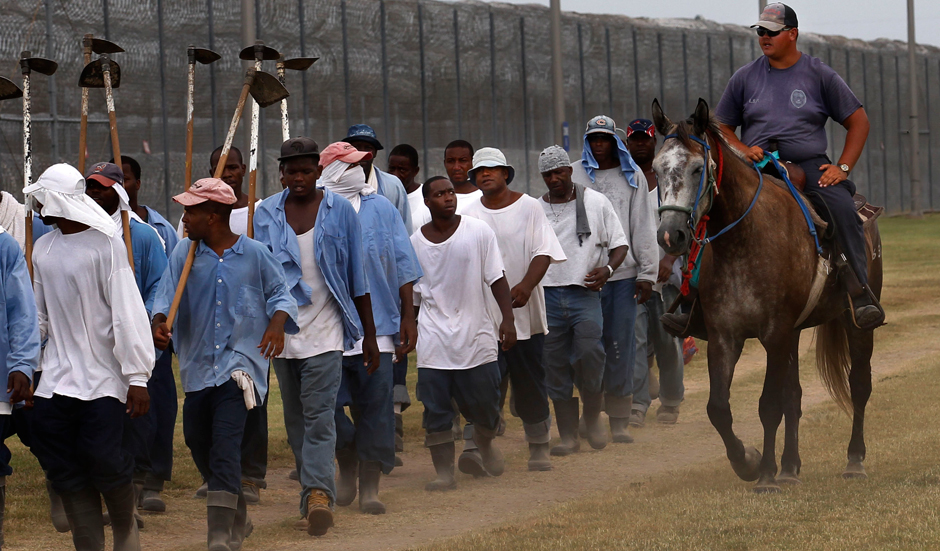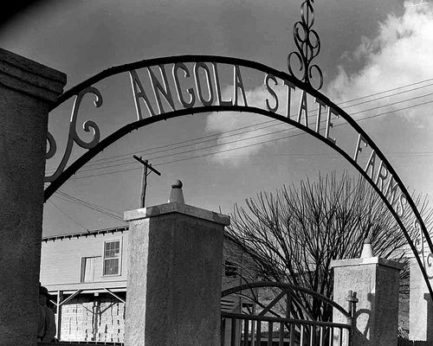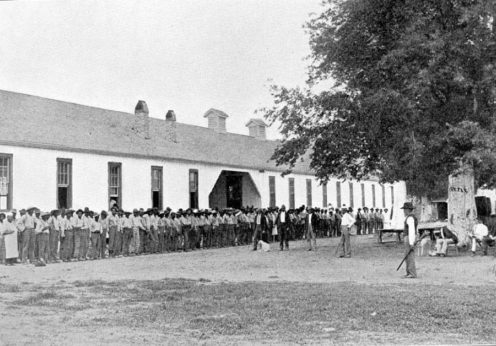
When the U.S. Civil War ended, Edward A. Pollard “of Virginia” immediately wrote a history of Confederate military operations—The Lost Cause: A New Southern History of the War of the Confederates—where he insisted that human slavery was immune from moral blame for the just concluded conflict. That’s because it “bestowed upon the world’s commerce in a half century a single product whose annual value was two hundred millions of dollars. It founded a system of industry by which labor and capital were identified [sic] in interest. [And] many fertile regions accessible only to the labor of the African were brought into usefulness, and blessed the world with their productions.”
There’s more: Slavery “elevated the African and was in the interest of human improvement.” He quotes Sen. Robert Toombs of Georgia, speaking in 1856: “The white is the superior race, and the black is the inferior; and subordination, with or without law, will be the status of the African in this mixed society.”
Pollard introduced the theme to be explored here: Capitalism—which Pollard alludes to—was and is married to white supremacy. Both were essential for making productive a section of fertile land in Louisiana now referred to as Angola. An analysis based on Marxist thinking sheds light on what moved that process.
200 years a prison
Angola has been plantation and prison for almost 200 years. Originally, enslaved people of African descent produced cotton to enrich an owner. Later, prisoners would be producing salable crops. Slave descendants would fill the prison.

Once Indians in the region had been rooted out, white entrepreneurs descended upon Louisiana. Beginning in 1835, Isaac Franklin, son of a Tennessee pioneer, took possession of 8,000 acres on the east bank of the Mississippi River in West Feliciana Parish (in Louisiana a “county” is called a parish). According to historian Wendell Stephenson, he divided them into six plantations, putting them all into cotton. He produced lumber too on the one called Angola, with 1,364 acres. (Full disclosure: Franklin was the present author’s 4X great uncle.)
At the time of his death in 1846, Franklin owned thousands of acres in Texas, the 2,000 acres of his home plantation in Gallatin, Tenn., 600 slaves, and shares in a Mississippi bank, a racetrack, and a toll highway—all in addition to his holdings in Louisiana. Stephenson writes that “Franklin’s estate in the middle forties was appraised at three quarters of a million dollars [$23,783,369 in 2018 dollars], and a large proportion of it had been accumulated in the [slave] traffic.” (Isaac Franklin, Slave Trader and Planter of the Old South, Baton Rouge: Louisiana State University Press, 1938.)
Indeed, as explained by journalist Betsey Phillips, “The richest man in the South…realized he could make a fortune selling men to the white men who wanted to put cotton in Mississippi.… He and his nephew [by marriage], John Armfield, headquartered their operation in Alexandria, Va., and they began to trade.” They of course bought and sold enslaved people. Theirs was the biggest slave-trading firm in the United States.
After Isaac Franklin’s death and until 1880, Adelicia Acklen Cheatham, his widow and the “richest woman in the South,” continued operations at the Louisiana plantations she inherited. Meanwhile, in 1869, former Confederate army officer Samuel James contracted to lease “all of Louisiana’s convicts.” He would put them to work. In 1880, he bought Cheatham’s 8,000 acres in West Feliciana. He lodged his rented prisoners there, subleasing some of them and forcing others to produce crops on his own land. He died in 1894.
By 1901, the state took to running its own prisons and that year purchased the prison plantation belonging to James’s heirs. Over the next twenty years, Louisiana expanded its holdings there to 18,000 acres. Thus was created the Louisiana State Penitentiary at Angola, usually referred to as “Angola,” or “the farm.”
In a recent year, “73% of Angola’s 6,250 inmates are serving life without parole. The average sentence for the rest is 90.9 years.” Angola is the largest maximum security prison in the United States in terms of prison population, “the largest penal complex in the world,” and tops among U.S. prisons for number of inmates incarcerated for life. Now, Blacks make up 75 percent of the prisoners, perhaps down from earlier years. As of ten years ago, guards and officials were “entirely white.”
Prison rules require all able-bodied prisoners to work a forty-hour week for no more than 20 cents per hour. Farm work predominates: “Inmates cultivate, harvest, and process an array of crops each year, producing four million pounds of vegetables [including] cabbage, corn, onions, strawberries, and tomatoes.” They grow “wheat, corn, soybeans, cotton and milo.” Angola prisoners maintain a herd of 2,000 cattle and raise draft horses for use there and for sale to the public. Additionally, prisoners make office furniture, bedding, garments, metal devices, and printing products.
Converted into a giant farm using forced labor, the prison harkens back to Angola under slavery. Ironically, it was the 13th Amendment to the U.S. Constitution that enables such continuity. That instrument ended both slavery and involuntary servitude—“except as punishment for a crime.”
Eager to criminalize Black people both for the sake of repression and to allow their labor to be expropriated, Southern officials and legislators resurrected from slavery times the so-called “black codes.” These became the basis for sending former slaves to prison on charges like vagrancy, public drunkenness, and minor pilfering.
Authorities then leased prisoners out to private mining, lumbering, and farming enterprises. Samuel James was making use of the convict-lease system when he owned the Angola plantations. The Jim Crow system of race prejudice gave it a boost by assuring convictions and long sentences. Essential reading on the convict-lease system is Douglas A. Blackmon’s Slavery by Another Name (New York: Random House, 2008), which was also the inspiration for a PBS series with the same title.
The long Angola story thus demonstrates grim continuity of two kinds. Those beyond the pale have been forced to labor at the behest of others. And products of their labor have been confiscated. It’s a story begging for explanation as to how and why things happened.
Slaves and prisoners—one and the same?
Ostensibly, slaves and prisoners represent different categories, and often that’s so. But in the United States, they may be one and the same. Of course they are both held against their will. Beyond that, however, prisoners, like slaves, have been forced to work, to produce salable goods, and to relinquish any gain from their labors.
Accumulation of wealth on the backs of prisoners and slaves has been rationalized with the notion that some prisoners and all slaves are inferior human beings and thus fit for expropriation.
Recently, analysts in the Marxist tradition have focused on expropriation which, they say, explains much about capitalism’s spread to the ends of the earth. Angola is one such place.

Nancy Fraser has the floor. “I hold that exploitation-centered conceptions of capitalism cannot explain its persistent entanglement with racial oppression. In their place, I suggest an expanded conception.” She explains: “Two…processes are essential for theorizing the racial dynamics of capitalist society. The first is the crucial role played in capital accumulation by unfree, dependent, and unwaged labor—by which I mean labor that is expropriated, as opposed to exploited.… The second concerns the role of political orders in conferring the status of free individuals and citizens on ‘workers,’ while constituting others as lesser beings—for example, as chattel slaves, indentured servants, colonized subjects, ‘native’ members of ‘domestic dependent nations,’ debt peons, felons, and ‘covered’ beings, such as wives and children.
“[E]xpropriation works by confiscating capacities and resources and conscripting them into capital’s circuits of self-expansion [italics are Fraser’s]…. The expropriated subjects may be rural or indigenous communities in the capitalist periphery—or they may be members of subject or subordinated groups in the capitalist core…. The confiscated assets may be labor, land, animals, tools, mineral or energy deposits—but also human beings.… Expropriation in this sense covers a multitude of sins, most of which correlate strongly with racial oppression.”
Authors writing for Monthly Review weigh in next: “[B]y the mid-nineteenth century, at the height of the Industrial Revolution, capitalism had metamorphosed into a developed mode of production centered on impersonal value relations and based on the systematic exploitation of what Marx called ‘formally free labor.’ In its descending phase of monopoly capitalism in the late nineteenth and twentieth centuries…the overall thrust of the capital system shifted back toward profit upon expropriation.… Monopoly profits became dominant while the imperialist expropriation of surplus under conditions of enforced inequality was extended to the entire global periphery.”
We recall Edward Pollard’s words above. He emphasized the capitalist nature of slavery. Slavery certainly filled that description at Angola during Isaac Franklin’s tenure there and capitalism has remained in charge at Angola ever since.
Equivalents to Angola, prisons or not, exist in varying degrees and shapes throughout the United States. The message is taken that to undo white supremacy, now is the time to confront and replace pervasive capitalism.










